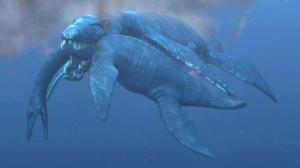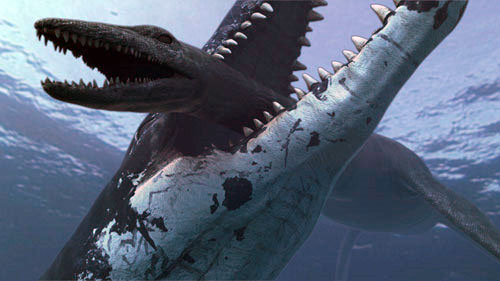Fossil remains of a huge and fearsome marine predator, dubbed "Predator X", have been discovered in Svalbard, a remote Arctic archipelago.
About 15 metres long and weighing 45 tonnes, the creature is a new species of pliosaur, and ruled the Jurassic seas some 147 million years ago.
Predator X had a head twice the size of Tyrannosaurus rex and its bite had four times the force, at around 15,000 kilograms (33,000 pounds). Its teeth were each around 30 centimetres (1 foot) long.
The remains were discovered in June 2008 during a two-week expedition led by Jørn Hurum of the Natural History Museum at the University of Oslo.
'Ultimate predator'
"Its anatomy, physiology and hunting strategy all point to it being the ultimate predator - the most dangerous creature to patrol the Earth's oceans," according to the museum.
The key find enabling the dimensions of the beast to be calculated was a spherical bone called the bassioccipital condyle, which connected the base of the skull to the spine.
"The condyle we found measures 15 centimetres in diameter, the largest of any known pliosaur species," explains Hurum. "By comparison, the condyle of T. Rex measures just 8 centimetres, meaning that Predator X's skull was at least double the size," he says.

Giant jigsaw
In all, the team found 20,000 fragments of the creature's skeleton, which is being assembled at the museum.
Analyses of bones from the four flippers suggest that the animal cruised using just two fore-flippers - using the back pair for extra speed when pursuing and capturing prey.
Predator X's brain was of a similar type and size, proportionally, to that of today's great white shark, the team says.
The full details of the find are to be published later this year, and a documentary following the expedition will be shown around the world from May.




Reader Comments
to our Newsletter